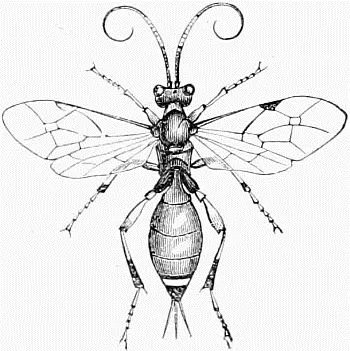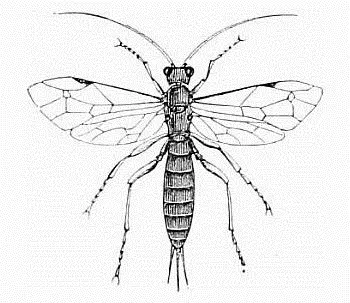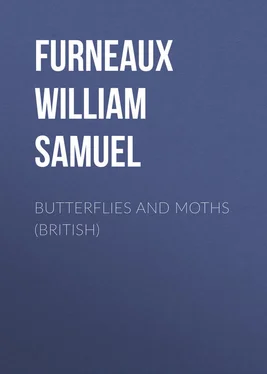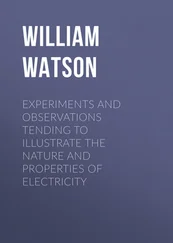William Furneaux - Butterflies and Moths (British)
Здесь есть возможность читать онлайн «William Furneaux - Butterflies and Moths (British)» — ознакомительный отрывок электронной книги совершенно бесплатно, а после прочтения отрывка купить полную версию. В некоторых случаях можно слушать аудио, скачать через торрент в формате fb2 и присутствует краткое содержание. Жанр: Природа и животные, foreign_antique, foreign_prose, на английском языке. Описание произведения, (предисловие) а так же отзывы посетителей доступны на портале библиотеки ЛибКат.
- Название:Butterflies and Moths (British)
- Автор:
- Жанр:
- Год:неизвестен
- ISBN:нет данных
- Рейтинг книги:5 / 5. Голосов: 1
-
Избранное:Добавить в избранное
- Отзывы:
-
Ваша оценка:
- 100
- 1
- 2
- 3
- 4
- 5
Butterflies and Moths (British): краткое содержание, описание и аннотация
Предлагаем к чтению аннотацию, описание, краткое содержание или предисловие (зависит от того, что написал сам автор книги «Butterflies and Moths (British)»). Если вы не нашли необходимую информацию о книге — напишите в комментариях, мы постараемся отыскать её.
Butterflies and Moths (British) — читать онлайн ознакомительный отрывок
Ниже представлен текст книги, разбитый по страницам. Система сохранения места последней прочитанной страницы, позволяет с удобством читать онлайн бесплатно книгу «Butterflies and Moths (British)», без необходимости каждый раз заново искать на чём Вы остановились. Поставьте закладку, и сможете в любой момент перейти на страницу, на которой закончили чтение.
Интервал:
Закладка:
Having thus passed through its first hardship, the caterpillar has by no means seen the end of the troubles and dangers that beset it; for, during its existence in the larval state, it has to go through a series of three, four, five, or even six moults, all of which are periods of considerable inconvenience, and perhaps even pain, and frequently prove fatal. And it is by no means an uncommon thing to meet with the lifeless body of an unfortunate individual who, as shown by its shabby appearance and the silken carpet under its feet, has evidently fallen a victim to the dangerous process of ridding itself of an old garment.
But this is only one of the many dangers to which caterpillars are exposed. Throughout every hour of the day the sharp and hungry eyes of the numerous insect-eating birds are searching the leaves for such delicacies to satisfy the wants of themselves and their broods. The lively little lizards, too, during the sunny hours are busily engaged in searching them out among the foliage of heaths and banks.
Very formidable enemies also exist in the form of Ichneumon and other species of flies, which pierce the skins of caterpillars with their sharp ovipositors , and lay their eggs within the bodies of the unfortunate victims. As soon as the young larvæ are hatched from these eggs, they commence feeding on the fatty substance stored beneath the caterpillar's skin. They carefully avoid, at first, attacking the vital organs of their host's body, and in this way secure for themselves a more lasting supply of fresh food. When the fatty substance is nearly all gone, they eat their way into the more important structures, of course steadily growing all the time; and so, even though the body of the caterpillar is rapidly diminishing, the total bulk shows often no very appreciable decrease in size. When the larvæ of the flies are fully fed, they either change to the pupa within the carcase of their host, or eat their way out of its body and construct for themselves a cocoon in which to undergo the transformation.

Fig. 17. – An Ichneumon Fly (Cryptus Migrator).

Fig. 18. – Another Ichneumon Fly (Pimpla Instigator).
As for the caterpillar itself, it sometimes dies before the time for its metamorphosis has arrived; but it often changes to the chrysalis before its fate is sealed. In this latter case, a number of flies, having undergone their final transformation within the chrysalis shell (there being but little else than shell remaining of the victim's body), break forth from the remains of the carcase somewhere about the time at which the butterfly or moth should have appeared.
Caterpillars have also their nocturnal enemies and devourers, among which may be mentioned frogs, toads, newts, and insect-eating mammals.
We must now learn something of the structure of caterpillars; and then become acquainted with their habits, and the change to the chrysalis or pupa.
Take a caterpillar from your garden, preferably a full-grown one of a rather large species, that is not very densely covered with hair, and examine it carefully as we note the main points in its structure. The first point that strikes our notice is the division of its body into segments or rings, separated from each other by a more or less distinct line or slight constriction of the body.
There are thirteen of these segments, reckoning, as is usual, the head as the first.
The head is usually very hard, and often of a much darker colour than the rest of the body. It is also frequently divided into two lobes by a couple of oblique lines, between which the parts of the mouth are situated. The two powerful horizontal jaws, to which we have already referred, are very hard and sharp, and curved like a sickle, and therefore splendidly adapted for biting from the edges of leaves. The head is also provided with a pair of antennæ, usually very short and inconspicuous and protected by a horny covering.
Unlike the perfect insect, the caterpillar has no large compound eyes, but twelve very small simple eyes, situated on the cheeks, very near the mouth – six on each side.

Fig. 19. – The Caterpillar of the Angle Shades Moth (Meticulosa).
If you examine them with a magnifier, you see that each one is provided with a small and very convex lens – a lens of very short focus , such as would be used for the examination of small objects held very near to the eye. From this arrangement we should be inclined to conclude that the caterpillar can see only those objects that are close to its mouth; and this idea is strengthened if you place one in a box containing a number of leaves, one of which is that of its own food plant. It will wander about the box, apparently looking at every part of every leaf it passes, after the manner of a very short-sighted individual, and never taking a general look round. A butterfly or a moth can see a flower in the distance, for it flies unhesitatingly from one to another in the straightest and shortest path, but if you place a caterpillar in the centre of a ring composed of a leaf of its food plant and nine others from other plants, the chances are (nine to one) that it will not walk towards what it would like to have.
Again, the eyes are situated on the lower part of the cheek, directed slightly downward, and are therefore adapted for seeing what is just under its jaws as it walks along. Had we no knowledge whatever of the caterpillar's twelve little eyes, we should probably have thought that it sought out its food by some sense other than that of vision.
Another important and interesting feature of the head is the silk-spinning apparatus, situated under cover of the lower lip. This consists of two tubular glands, corresponding to our own salivary glands, the special purpose of which is to secrete a viscid fluid that solidifies on exposure to air. The opening by which the fluid escapes is so situated that the caterpillar can easily apply it to the surface of any object over which it is walking, and then, by drawing or turning away its head, cause a silken fibre to be produced.
Some caterpillars make use of this spinning apparatus only on a few special occasions, but others, more especially some of the smaller species, seem to have it always in use, so that if at any time you suddenly start them into the air by giving a smart tap to the plant or twig on which they rest, they invariably fall slowly on the end of a growing web, the spinning of which they stop as soon as they consider they have fallen far enough. Sometimes, as you are walking through a wood, you will see hundreds, nay, thousands of little caterpillars thus suspended, swinging gently in the breeze. Not long since, after only a few minutes' walk among the trees of Epping Forest, I found I was decorated with several dozens of these swingers with which I had come into collision – in this case consisting chiefly of the larvæ of the Green Tortrix Moth ( Tortrix viridana ).

Fig. 20. – Walking Leg of a Caterpillar.
Now let us examine the caterpillar's limbs. Attached to each of the second, third, and fourth segments is a pair of true walking legs, corresponding with those of the perfect insect. These are covered with a hard and shining substance, and are also each provided with a hook. The fifth and sixth segments have no limbs at all, nor have the eleventh and twelfth, but some or all of the others (seventh, eighth, ninth, tenth, and thirteenth) are furnished with a pair of claspers which we shall presently describe.
Читать дальшеИнтервал:
Закладка:
Похожие книги на «Butterflies and Moths (British)»
Представляем Вашему вниманию похожие книги на «Butterflies and Moths (British)» списком для выбора. Мы отобрали схожую по названию и смыслу литературу в надежде предоставить читателям больше вариантов отыскать новые, интересные, ещё непрочитанные произведения.
Обсуждение, отзывы о книге «Butterflies and Moths (British)» и просто собственные мнения читателей. Оставьте ваши комментарии, напишите, что Вы думаете о произведении, его смысле или главных героях. Укажите что конкретно понравилось, а что нет, и почему Вы так считаете.












